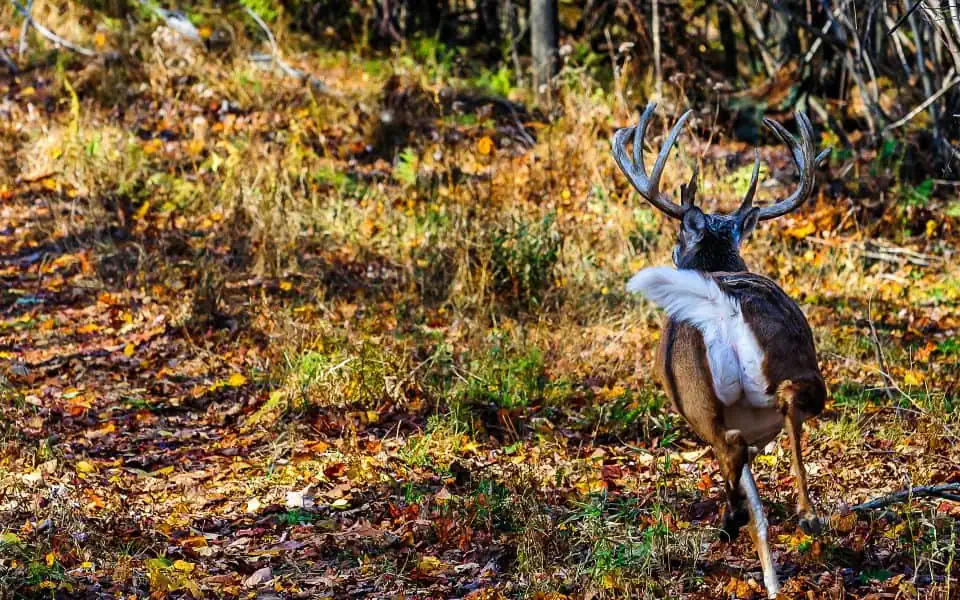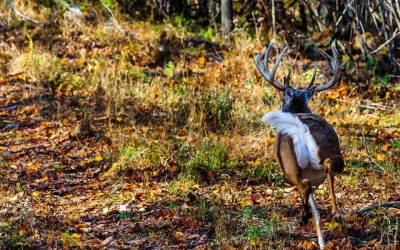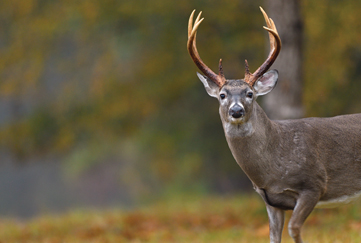Source: Whitetails Unlimited Magazine
Trail cameras are a great tool to monitor the deer you’re hunting, keep an eye on predator numbers, or just generally watch the wildlife on your property. That said, you may be missing out on a huge number of photos if you aren’t doing some things right.
Tip 1: Prep the Area. 
It’s a fine line, getting an area clear enough to get good pictures, without making the camera stick out like a sore thumb. False triggers are a problem though, especially for cell cams with a monthly photo count. Tall grass, low-hanging branches, tree stand straps—all of these things can blow in the wind and trigger a photo. We all love pulling cards with 5,000 photos, but if 4,895 of them are of nothing, what’s the point? An ounce of prevention here is worth a pound of cure.
Tip 2: Mind the Sun.
Whenever possible, you are better off facing a camera more north or south, than east or west. Facing into a rising or setting sun makes it impossible to get a decent photo. The light just isn’t manageable with a huge ball of gas shining brightly into the lens. Reposition the camera to ensure even, balanced light as often as possible.
Tip 3: Choose the Right Tool.
Sure, you could take up an old sidewalk with a hammer and a chisel, but aren’t there better tools for that job? The same goes for trail cameras. They may all mostly work in any situation, but they won’t all excel in all conditions. Use cameras with a faster trigger speed on trails where you expect deer to typically be moving. Longer flash and detection ranges are useful on cameras placed on food plots or field edges. Be deliberate when you choose a camera for a particular location. The right choice will yield better results.
Tip 4: Angles Matter.
Getting photos of deer butts with the other half already out of frame? You have an angle-to-trail problem. Never set a camera up perpendicular to where you expect the deer to travel. Aim the camera up or down the trail to allow the most time for the deer to trigger the camera to take a photo.
Tip 5: Ditch the Stick.
Speaking of angles, quit pointing your camera into the ground. Hand a dozen hunters a trail camera, and ten will walk up to a tree, strap the camera shoulder-high, and cram a stick behind it to get the angle right. Stop it. You’re cutting your flash and detection range in half, if not more by doing so. Think of that detection zone as a flat laser coming out of the camera. If you angle it down, you’re shooting it into the ground. Instead, take a knee and mount the camera about waist high. Now you can maximize the effective range of the camera and avoid the hot spot you get by shooting the flash into the ground.
Tip 6: Maintenance Matters?
Updating firmware is no fun, but if you want to keep your camera working, you really should be checking and updating firmware at least a couple times a year. This isn’t just a cellular consideration; noncellular cameras get firmware upgrades too. Just keep an eye on it. Also, take time every year to bring your cameras in and clean everything up. Brush off the lenses, clean out the battery area, and check the weatherproof seal around the door. It’s just good practice.
Tip 7: Don’t Short Accessories.
The difference between a good SD card and a cheap one is only a few dollars. The same is true for batteries. Don’t skimp on either. It’s like putting regular 87 octanes in a racecar. It may run for a while, but eventually you’ll create conditions that will make the car, or camera, break down. Use the good stuff for memory and power and you’ll be happy you did.






0 Comments